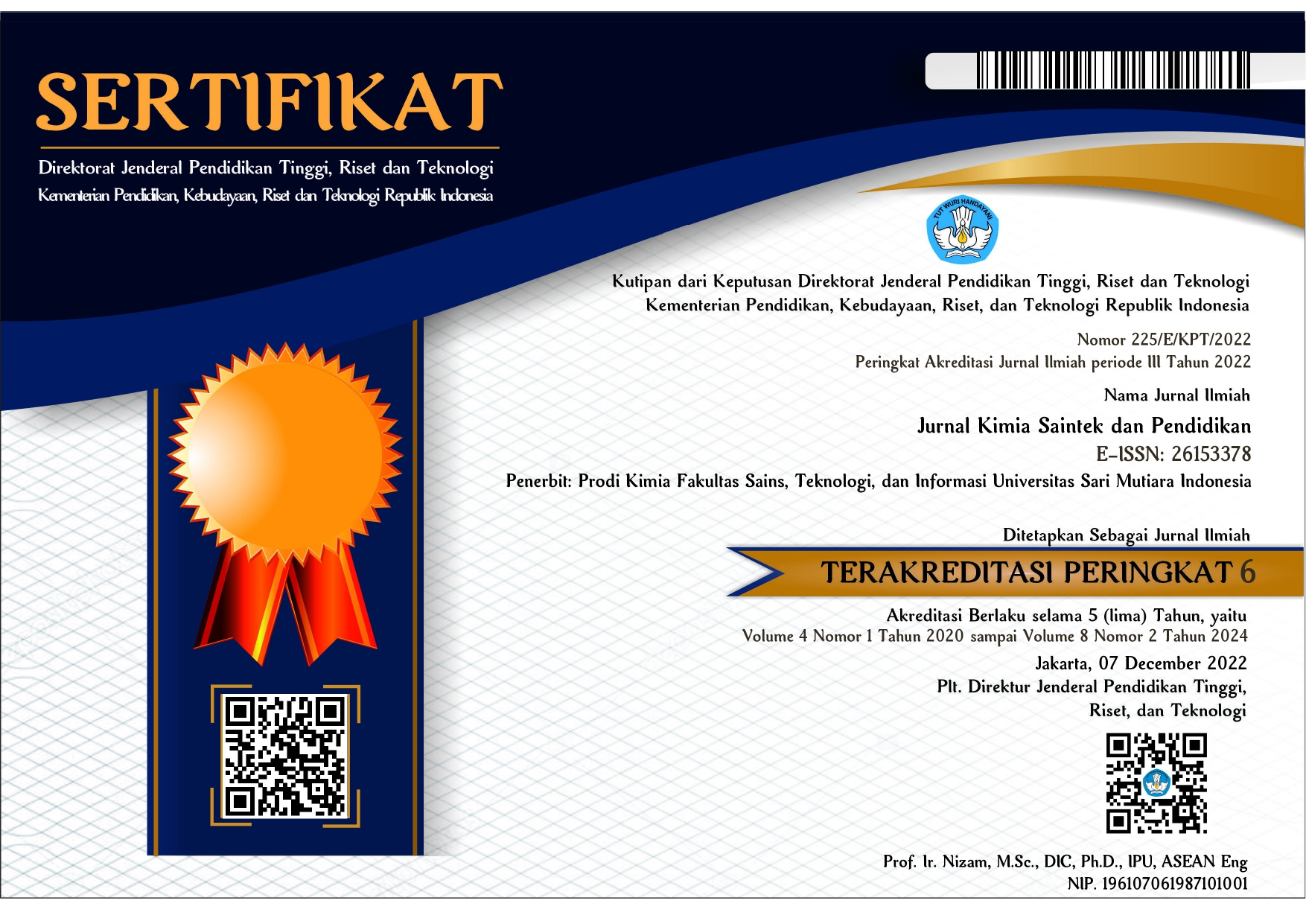ANALISA MORFOLOGI CARBON DOTS (C-Dots) DARI AIR TEBU
Keywords:
Carbon dots, Sugarcane juice, sucrose, MicrowaveAbstract
Carbon dots (C-dots) measuring less than 10 nm are currently the center of attention in nanocarbon materials. C-dots have unique physicochemical and photochemical properties that make C-dots a promising platform for imaging, environmental, catalytic, biological and energy-related applications. Sugarcane (Saccharum officinarum) is an annual plantation crop that is used as raw material for making sugar. The main content of sugarcane juice is sucrose (70-88%). The sugarcane juice content and low price make sugarcane juice suitable for use as a basic material for making carbon dots (C-dots). The process of making C-dots from sugarcane juice is done by adding urea as a passivation agent using the microwave method with a power of 110 watts. Sugarcane juice and urea (10:1) were dissolved with distilled water, stirred and heated at a temperature of 70 C for 15 minutes. The solution was then put in the microwave to dry (20 minutes). The gel formed was then dissolved with distilled water, centrifuged and then dialyzed for 24 hours. Morphological analysis of C-dots was performed by TEM analysis, showing that C-dots had an average diameter of 6.2 nm.









 This work is licensed under a
This work is licensed under a 

.png)

